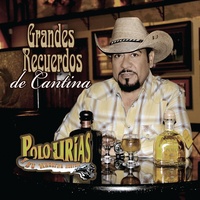

My grain of palay is lik e a little leaf But it was able to fill the whole house. Pay ku hangka uhayuhay Nalatag in laum bay.(Palitaan) It was entered inside and tak en outside It was zigzagged Let it enter, tak e it out Let it zigzag. Riddling in Tausug society, especially during weddings, wakes, and the month of Ramadan, becomes a duel of wit and wisdom: Piyasud piyasling Piyasausugaring Pasura paslinga Pasa usugaringa. Grandfather's riddle starts: His mouth does not speak His heart is speak ing What is it? (This is the lute) Igum ni Upu samula: Kaya magbaras baba Atay ja magbaras Anu atin? (Atin Kusyapi) Grandfather's riddle starts: Two plates Same diameter What is this? (This is the universe) For instance, Palawan children enjoy answering the igum (riddle): Igum ni Upu samula: Duwang raja Kasdang lakbang Anu atin? (Atin lungs ud) The riddle not only sharpened children’s observation of their environment, but also taught them about the surrounding world and its imaginative relationships, thus giving them a vision-a way of seeing. Nakatalikod na ang prins esa, ang mukha'y nakaharap pa. Yumuko man ang reyna, di malalaglag ang korona. May puno walang bunga, may dahon walang sanga. Lumuluha walang mata, lumalakad walang paa. Hindi tao, hindi hayop, kung uminom ay salup -salop. Kay lapit-lapit na sa mata, hindi mo pa rin makita.

Dalawang batong itim, malayo ang nararating. Ako'y may kaibigan, kasama ko kahit saan. Kung kailan pinatay, saka humaba ang buhay. At the heart of a riddle is a metaphor (talinghaga) linking two unrelated images both found in the riddler’s immediate setting: _ 1. Around a fire, after a meal, parents and children would exchange bugtongs as an affectionate game as well as a learning process. Pre-colonial literature Folk sayings or riddles like tigmo in Cebuano, paktakon in Ilonggo, patototdon in Bicolano, and bugtong in Tagalog In folk villages, along river banks and sea coasts, in farms and forests, riddles (bugtongs) were used to entertain. A diacritical mark-the kudlit-modified the sound of the symbol into different vowel sounds:

They used the ancient Tagalog script which had 17 basic symbols: 3 vowels-a/e, i, o/u 14 consonants-ba, ka, da/ra, ga, ha, la, ma, na, nga, pa, sa, ta, wa, ya. Early Filipinos wrote on bamboo or on specially prepared palm leaves, using knives and styli. The term “baybayin” literally means “spelling”.

Archaic writing system Baybayin or alibata-is a pre-Hispanic Philippine writing system that originated from the Javanese (Indonesian) script Kavi.


 0 kommentar(er)
0 kommentar(er)
